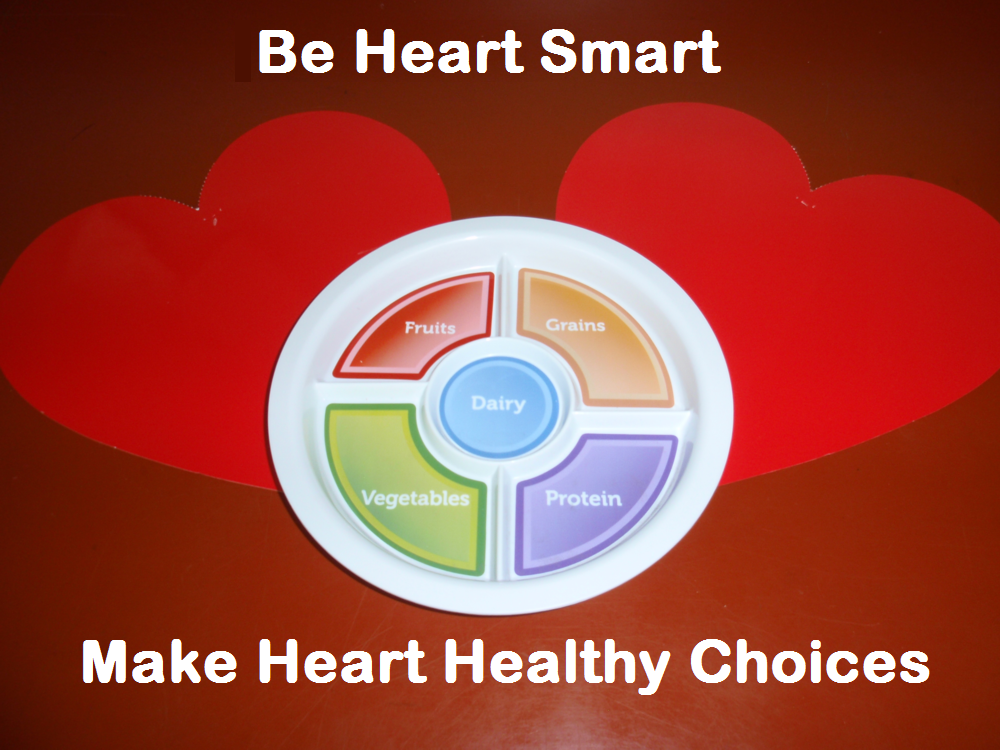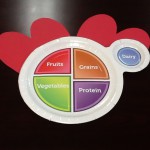by Dorothy C. Lee | Mar 17, 2015

Egg food safety at Easter time
Easter activities often include eggs. During the Spring holiday, eggs are both a decorative craft object and an inspiration for springtime fun and games, and, oh by the way, they are fun to eat too.
Eggs and egg products can be an important part of your diet. Although there are many myths and misconceptions about how to safely cook and handle eggs, all it really requires is care. By following a few simple guidelines, eggs and egg products can play a valuable and economic role in your holiday menu.
To avoid the possibility of foodborne illness, fresh eggs must be handled carefully. Even eggs with clean, uncracked shells may occasionally contain bacteria called Salmonella that can cause an intestinal infection. The U.S. Food and Drug Administration (FDA) is working to prevent this problem in eggs by requiring that egg producers obtain chicks that are certified Samonella-free, that the hens are kept in houses that are free from rodents and other Salmonella carrying sources, that the houses are continually tested for Salmonella, and that the eggs are stored at temperatures that retard Salmonella growth. Consumers play a large role in this prevention strategy. In fact, the most effective way to prevent egg-related illness is by knowing how to buy, store, handle and cook eggs—or foods that contain them—safely.
Following these instructions is important for everyone, but especially for those most vulnerable to foodborne disease—children, the elderly, and persons with weakened immune systems.
Buy Right
- Buy eggs only if sold from a refrigerator or refrigerated case.
- Open the carton and make sure that the eggs are clean and the shells are not cracked.
- Refrigerate promptly.
- Store eggs in their original carton and use them within 4 to 5 weeks.
Keep Everything Clean
Before preparing any food, remember that cleanliness is key!
- Wash hands, utensils, equipment, and kitchen work surfaces with hot, soapy water before and after they come in contact with eggs and egg-containing foods.
Cook Thoroughly
Cook eggs thoroughly. Thorough cooking is perhaps the most important step in making sure eggs are safe.
- Cook eggs until both the yolk and the white are firm. Scrambled eggs should not be runny.
Serve Safely
Bacteria can multiply in temperatures from 40°F (5°C) to 140°F (60°C), so it’s very important to serve foods safely.
- Serve cooked eggs and egg-containing foods immediately after cooking.
- For buffet-style serving, hot egg dishes should be kept hot, and cold egg dishes kept cold.
- Eggs and egg dishes, such as quiches or soufflés, may be refrigerated for serving later but should be thoroughly reheated to 165°F (74°C) before serving.
Chill Properly
- Cooked eggs, including hard-boiled eggs, and egg-containing foods should not sit out for more than 2 hours. Within 2 hours, either reheat or refrigerate.
- Use hard-cooked eggs (in the shell or peeled) within one week after cooking
On the Road
- Cooked eggs for a picnic should be packed in an insulated cooler with enough ice or frozen gel packs to keep them cold.
- Don’t put the cooler in a hot car—carry it in the air-conditioned passenger compartment of the car.
Safe Handling Instructions
To prevent illness from bacteria: keep eggs refrigerated, cook eggs until yolks are firm, and cook foods containing eggs thoroughly.
Hard-cooked Easter eggs can help stretch your food dollars. Packed with high-quality protein, vitamins, and minerals, they add good nutrition when included in casseroles, sandwiches, and salads. Remember, hard-cooked eggs should be refrigerated as much as possible between cooking, decorating, and the hunt or the display.
However they are used, eggs are delicious, nutritious, and economical.
For further information, contact
Dorothy C. Lee, C.F.C.S.
Family & Consumer Sciences Agent
UF IFAS Extension Escambia County
(850) 475-5230
dclee@ufl.edu
by Heidi Copeland | May 12, 2014
 The President of the United States of America, Barack Obama has proclaimed obesity a national, serious public health issue. As such, he is encouraging all Americans to learn about and engage in activities that promote healthy eating.
The President of the United States of America, Barack Obama has proclaimed obesity a national, serious public health issue. As such, he is encouraging all Americans to learn about and engage in activities that promote healthy eating.
How can you get involved? Let’s start with the family meal. There are many benefits to family meals. Families are more likely to eat a nutritious meal when most or all of the family eats together. Plus, families who eat at home have control of portion sizes and ingredient choices. Additionally, children who eat with their families are likely to consume more fruits, vegetables, and whole grains and less fat sugar and empty calories.
Research shows that adolescents are also less likely to smoke, drink, and use illegal drugs during their teen years. Enjoying family meals together enhances family communication and provides opportunities for families to share traditions, recipes and family heritage that can be handed down through each generation. And, family meals improve manners, too!
We are not talking about a Thanksgiving type spread here. A family meal can be breakfast, lunch or dinner. Nutrition experts state the meal does not even have to be enjoyed around the table. The important fact is that it is enjoyed together creating a lifetime of positive memories.
Cooking at home can be an intimidating task, but a rewarding one for you, your family, and your budget. Did I mention health?
Homemade meals are easy once you learn a few cooking basics. Once the basics are understood’ a cook can develop the confidence to be creative and experimental. Using family mealtimes as instructional times can also be a wonderful opportunity for you to teach your children how to cook good, healthy meals too.
Are you wondering how to get started?
The University of Florida, IFAS EDIS publications contain a wealth of information about purchasing, and preparing foods http://edis.ifas.ufl.edu/ (put cooking in the search bar). Another good resource is the Cook it Quick series by Alice Henneman, MS, RD, University of Nebraska Extension in Lancaster County http://food.unl.edu/fnh/cooking-school. Not only will you find quick tips and tricks but you can hone in on cooking techniques as well as find quick, healthy recipes.
Vow to prepare and eat more meals at home. You and your loved ones will be glad you did!
by Ginny Hinton | Mar 17, 2014

Moderation is the key with both sugar and sugar substitutes.
Do you use sugar, honey, artificial sweetener, or some combination of them all? Which are better to use? The internet is flooded with myths about sweeteners – both nutritive and low- or no-calorie. Because it’s often difficult to sift through the claims, here’s a quick primer on sweeteners:
There are two types of sugar in American diets. Naturally occurring sugars are found in milk and fruit. Added sugars include any sweeteners with calories that are added to foods or beverages during preparation. One of today’s biggest culprits for added sugar is carbonated soda. Because added sugars contribute extra calories with zero nutrients, the American Heart Association recommends that everyone try to limit the amount of added sugars in their diet. One way to do that is by using artificial sweeteners.
Artificial or non-nutritive sweeteners are often used for weight control or diabetes management. Because they aren’t carbohydrates, these sweeteners don’t raise blood sugar levels. Approved non-nutritive sweeteners have to pass rigorous government safety assessments before being accepted for sale. They can be safely consumed by the general public and do not cause or increase the risk of cancer or other health conditions. They may help with weight management when used as part of a sensible meal plan. Many rigorous studies support the safety of various non-nutritive sweeteners, including over 200 studies on aspartame alone.
High fructose corn syrup is a sweetener made from corn starch. It has the same calories per tablespoon and very similar effects on blood levels as sugar. Honey is a caloric, or nutritive, sweetener that is often promoted as a healthier option than table sugar or sugar substitutes. Its vitamin and mineral content is actually very similar to sugar and both sugar and honey end up in the body as glucose and fructose.
The bottom line is that moderation is the key with both sugar and sugar substitutes. It’s important with sweeteners to look beyond the hype. In the end any processed foods, with or without sugar substitutes, generally don’t offer the same health benefits you get from foods like fruits and vegetables.
References:
Mayo Clinic Staff, Artificial Sweeteners and Other Sugar Substitutes (October 9, 2012). http://www.mayoclinic.com/health/artificial-sweeteners?MY00073
Junod, Suzanne W., Sugar: A Cautionary Tale (May 21,2009). http://www.fda.gov.
CFSAN/Office of Food Additive Safety, FDA Statement on European Aspartame Study (April 20, 2007). http://www.fda.gov
International Food Information Council Foundation, Facts About Low-Calorie Sweeteners, (August 2012). www.foodinsight.org.
American Diabetes Association, Artificial Sweeteners (February 16, 2011). www.diabetes.org/food-and-fitness/
Food and Drug Administration, High Fructose Corn Syrup: Questions and Answers (April 17, 2013). http://www.fda.gov
Hirsch, Larissa, Are Artificial Sweeteners OK to Consume During Pregnancy? (August 2009). http://kidshealth.org
Low Calorie Sweeteners Webinar powerpoint (2011). https://connect.extension.iastate.edu/fffcop?launcher=false.
American Heart Organization, Non-Nutritive Sweeteners (Artificial Sweeteners) (December 13, 2012). http://www.heart.org?HEARTORG

by Dorothy C. Lee | Mar 3, 2014

Be Heart Smart – Make Heart-Healthy Choices
The Centers for Disease Control and Prevention estimate that about 600,000 people die of heart disease in the United States each year. Heart disease is the leading cause of death for both men and women in the United States.
Eating habits are something we acquire as we grow up. Over the years, family eating habits have changed drastically. There is less emphasis given to well-planned family meals. American food habits are leaning more toward meals eaten away from home, and more reliance on fast food, convenience foods, and high-sugar, high-salt snacks.
The food choices we make today are important to our nutritional well-being tomorrow. A diet low in saturated fat and cholesterol and high in fruits and vegetables and grain products that contain some type of dietary fiber may reduce the risk of heart disease.
Be Heart Smart. Make heart-healthy choices at every meal. Basic steps to a heart smart diet are simple and easy:
- Select whole grains and cereals
- Eat a wide variety of fruits and vegetables
- Limit sodium intake
- Use oil products made from unsaturated vegetable oils instead of saturated oils like coconut and palm kernel
- Select cooking methods that are lower-fat alternatives to frying, such as grilling, baking, broiling, or microwaving
- Choose lean meat, poultry, and fish
Your health is your most precious possession. A healthy diet is only one part of a heart-healthy lifestyle. Physical activity is another important component. The American Heart Association physical activity guidelines recommend some type of aerobic exercise daily, and walking, dancing, biking, swimming, or gardening are good examples. Be sure to consult your physician before starting any exercise program.
We are all concerned about maintaining good health. Developing good eating habits based on moderation and variety, plus physical activity, can help keep, and even improve, your health.
For more information, visit the University of Florida Solutions for Your Life website, http://www.SolutionsForYourLife.com.
Reference: http://www.heart.org

by Angela Hinkle | Mar 2, 2014

Enjoy the taste of eating right.
Taste tops nutrition as the main reason why we buy one food over another, as consumer research has clearly shown. Even though social, emotional, and health factors do have important roles to play, the foods people enjoy are probably the ones they eat the most. The key message for National Nutrition Month® – March 2014 focuses on encouraging personalized healthy eating styles – showing how we can combine taste and nutrition to make healthy meals.
This year, the Academy of Nutrition and Dietetics encourages everyone to “Enjoy the Taste of Eating Right”. Because taste is the major influencer of what we eat, it’s important to balance choosing the foods we like with those that provide the nutrients we need.
When it comes to choosing what to eat, nutrition is important, but flavor is the true motivator and the key to eating right. We have over 10,000 taste buds, so we should use them to discover a world of tasty nutritious foods.
- Try one new fruit, vegetable, or whole grain each week.
- When eating out, try ethnic foods from Asia, Europe, or Africa because they often have many healthy options.
- When cooking at home, try a new twist on old favorites. Grill vegetables and fish, make kabobs, bake the potatoes instead of mashing them, and use that spice rack to add zest.
- If you’re sticking with the tried and true foods you know you like, be sure to read the nutrition labels to help you develop a plan for healthy eating that emphasizes a balance of foods.
Return to the basics of healthful eating starting this month. Enjoy the Taste of Eating Right: eat right, your way, every day.
Learn more about how you can enjoy the taste of eating right by visiting www.eatright.org and by contacting your local UF/IFAS Extension Office.







